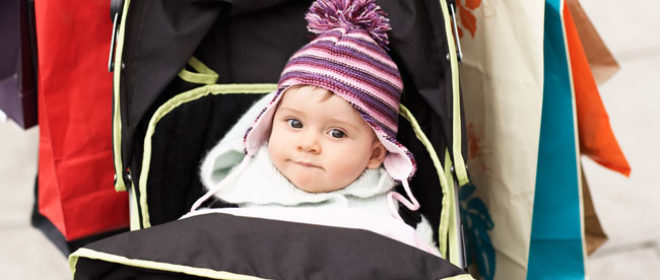
Problems can start by looking in the wrong place
One of the responsibilities that parents have is making decisions about caring for their children in a fast changing world that research cannot keep up with. A good scientist wants well-designed research studies that address specific issues, are peer reviewed and ideally replicated before they will make statements of near certainty about the results, and what we should do. That process takes time.
When we realize the number of changes that are affecting the time spent in face-to-face interaction between children and care givers, it is likely we, as parents, need to make some decisions before research is going to provide specific guidance. What are some of these changes and what should we do?
When I was a child all the baby strollers that I can remember had the baby/toddler facing the parent. Today most child strollers have the child facing forward. I have asked parents what they think of that position for the infant/toddler and I get the same response from all. They think the child will see more and learn more looking forward. This is not a research-supported conclusion. They will likely learn less.
Two researchers at the University of Washington, Rechele Brooks and Andrew Meitzoff, have provided some amazing insight into an aspect of face-to-face interaction referred to as gaze following. In a 2015 article [1] they show the results of their research on gaze following that began with a research study they published in 2002 [2] with continuing research and articles published in 2005 [3] and 2008 [4].
Their early results showed that infants around 10 – 12 months of age were very interested in where their care-givers eyes looked. This pattern of following gaze is critical in a child’s development to help them learn about the world, what is interesting and important, and how to respond. The researchers found that children with higher gaze following behavior had an increased vocabulary by age two and a half and understood more mental state words. This means the toddlers with increased gaze following activity had the vocabulary basis for better social-emotional skills and at four and a half years old demonstrated these increased skills through having a better understanding of the internal thinking states of other children. This is a building block of empathy.
These findings are incredibly important. If infants and toddlers learn best about their world through following eye gaze, then changes that decrease the opportunities to follow eye gaze are significant. As I have stated in earlier articles, my wife is a kindergarten teacher, and her and her colleagues have observed a drop off of the social-emotional skills of children entering kindergarten, especially in the past five to ten years. This includes a decrease in empathy. These decreases are almost certainly in part the result of less face-to-face interaction.
Let me list some of my observations of ways in which we are likely decreasing face-to-face interaction.
- I see screens being placed in children’s hands at earlier and earlier ages.
- Parents often sit at a table looking at their phone, while a child sits quietly or misbehaves trying to get attention.
- Parents often walk holding their child’s hand with one hand and have a phone in their ear with the other hand. They are not interacting about what is around them.
- Young children face forward in strollers and cannot track their caregiver’s eyes which decreases their learning about the world and mental states.
- Children play video games beginning at very early ages. Even two-player video games have players sitting side by side in which there is little or no face-to-face interaction. This is very different than board games in which eye-to-eye contact and social interaction is a central aspect of these games.
- Children continue to have increasing time spent in front of a TV, reducing face-to-face time.
- Texting becomes a critical part of communication in a child’s life reducing the amount of face-to-face interaction.
We are actually forcing our children to look in the wrong places and thereby are hindering healthy development. The evidence suggest this is creating problems for our children, for us, and for our society. It will take time for researchers to delve into all of these (and more) and tell us specifics about the effects of these societal changes.
There is sufficient research-based evidence to let us know this is a developmentally unhealthy trend, and we need to work specifically to increase the opportunities for face-to-face interaction with children. This is a good decision we can make today, and work to reverse the effects of changes like the ones listed above.
For those of you reading this article, I am interested in what changes you have noticed that decrease the amount of face-to-face interaction between caregivers/teachers and children.
- Brooks, R., & Meltzoff, AN. Connecting the dots from infancy to childhood: A longitudinal study connecting gaze following, language, and explicit theory of mind. Journal of Experimental Child Psychology, 2015;130:67-78.
- Brooks R, Meltzoff AN. The importance of eyes: how infants interpret adult looking behavior. Developmental Psychology. 2002;38:958–966.
- Brooks R, Meltzoff AN. The development of gaze following and its relation to language. Developmental Science. 2005;8(6):535–543.
- Brooks R., Meltzoff AN. Infant gaze following and pointing predict accelerated vocabulary growth through two years of age: a longitudinal, growth curve modeling study. Child Lang.2008;35:207–220.
